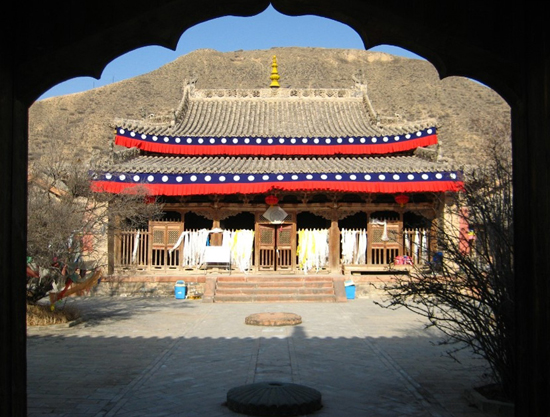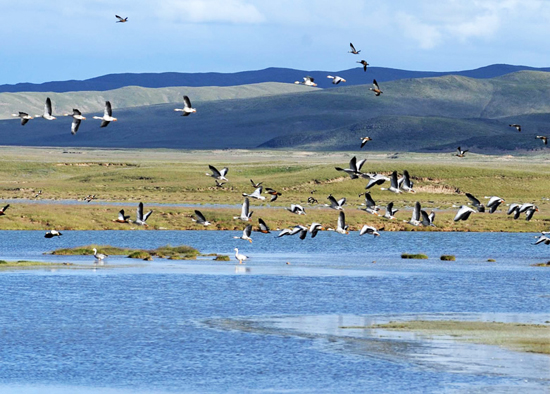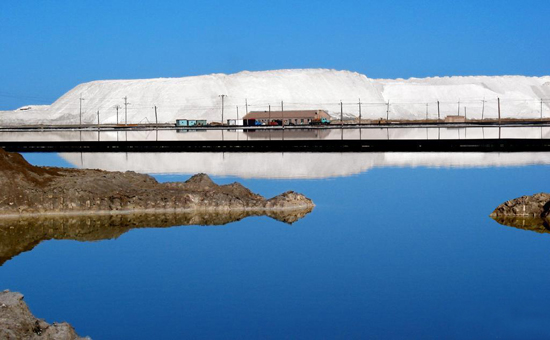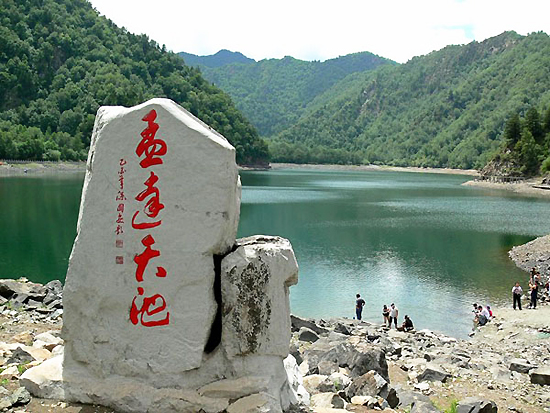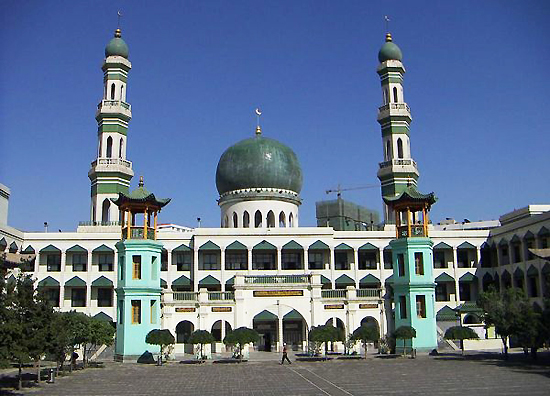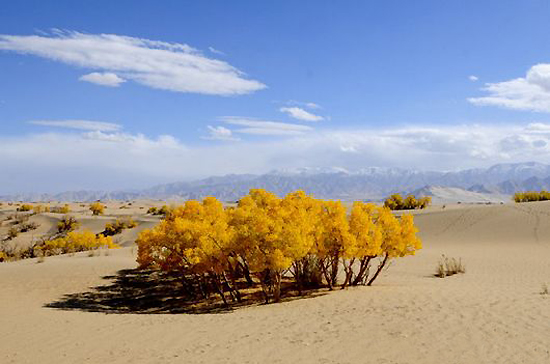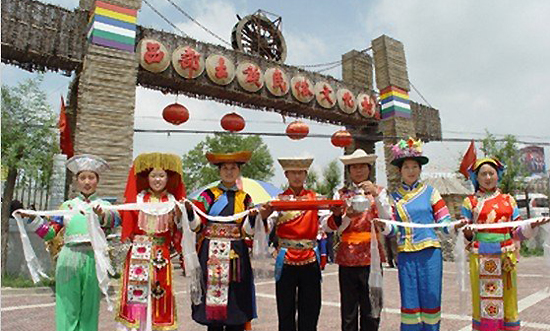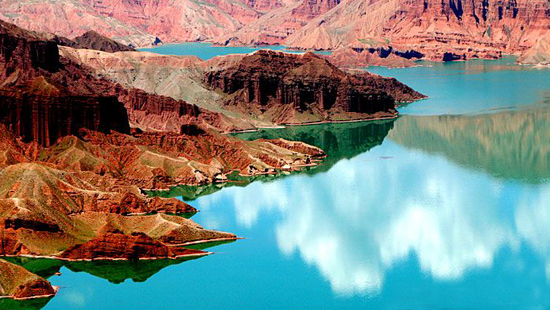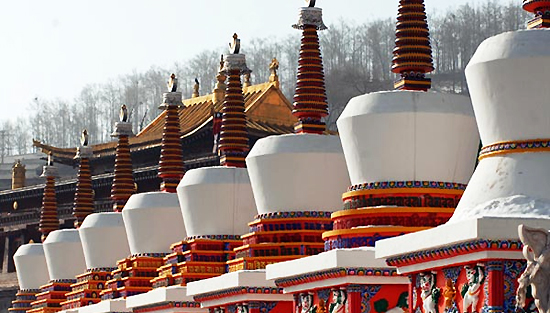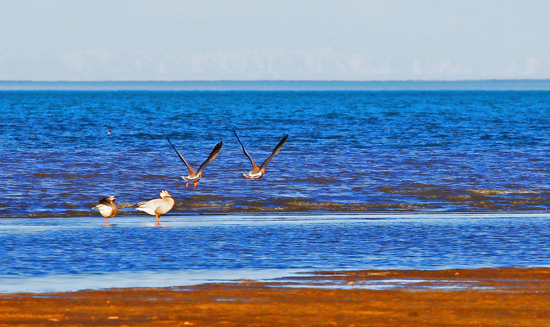
 China Tours
China Tours Tibet Tours
Tibet Tours China Theme Tours
China Theme Tours Off The Beaten Track
Off The Beaten Track Yangtze Cruises
Yangtze Cruises China Trip Planner
China Trip Planner Travel Agents
Travel Agents


We had a wonderful time in Tibet. We have learned a lot about this unique destination because of the wonderful guide Degyi who is so knowledge and always available towards our tours. We stayed at the Shangri-La Hotel Lhasa, and we would never imagine a Tibet travel could be so nice and amazing without the help of Degyi.
Also, thanks a lot to our Tibetan driver Mr.Wongdun for his safe driving and a good sense of service along the way.
We shall return Tibet in the near future!
P.B. and A. A - Europe
Tibet Travel
June 2018 (Private Tibet Journey from Kathmandu)

Posted: June 6, 2013 By: Admin
Named after Qinghai Lake, the largest inland salt lake in China, Qinghai Province features colorful natural landscapes including snow-covered mountains, deserts, vast pastures and sparkling lakes, and is home to flocks of rare birds and animals. People of Han, Tibetan, Tu, Hui, Salar and Mongolian minority ethnic groups form unique cultures and folk traditions.
Qutan Temple
|
|
The temple was built after modeling the structure of the Forbidden City in Beijing, so it is referred to by experts as "the imperial palace of the northwest." Its axis runs directly through its mid-section, dividing the temple into two symmetrical parts.
The temple boasts for its magnificent architecture, precious cultural relics and large pieces of frescoes. It has become an important arena venue for religious activities as well as a tourist destination.
Sanjiangyuan National Nature Reserve
|
|
Located in the hinterlands of the Qinghai-Tibet plateau in southern Qinghai with at an altitude of over 4,000 meters, the reserve covers an area of about 150,000 square kilometers (15 million hectares), larger than the total area of England and Wales of the UK. It is the largest and highest natural wetland in China.
The reserve boasts for its beautiful scenery and rich resources including grasslands, mountains, rivers, snow mountains, wetlands and wild life. It is home to many precious animals such as Tibetan antelopes, Tibetan gazelles, wild yaks and wild asses. It has been described as "Asia's water tower," providing the lower reaches of the three rivers with 60 billion cubic meters of water annually.
Qarhan Salt Lake
|
|
As a natural resource for a number of important minerals, the lake is famous for its deposits of more than 50 billion tons of sodium chloride, or table salt, which canenough to supply 6 billion people for 1,000 years. The briny water of the lake crystallizes into salt under the searing heat, forming a hardened salt bed around the lake.
The most amazing feature of the lake is the 32-kilometer-long salt bridge built across the lake. The bridge, 15-18 meters thick, is made with salt. "Floating" on the lake, the bridge is straight and smooth on the surface, which divides the lake into two parts. Driving on the bridge is an interesting experience.
Mengda Nature Reserve
|
|
Established in 1980, the reserve is the first reserve focusing on plant protection in Qinghai. Covering a total area of 9,544 hectares, it features primeval primeval forest, a large variety of exotic flowers, waterfalls and many wild animals. Looking from a distance at the Mengda Heavenly Lake in the reserve, the lake is like a pearl on the Qinghai-Tibet Plateau. It is a perfect place for hiking and boating.
Dongguan Grand Mosque
Dongguan Grand Mosque, located at the south side of Dongguan Street in Qinghai's capital city Xining, is the largest mosque in the province and one of the largest in northwest China, covering an area of 11,940 square meters (1.194 hectares). It is also the best-protected ancient building in the city.
The style of the mosque combines both traditional Chinese design and Islamic architectural features, with grand appearance and delicate, dazzlingly inside ornaments interior appointments. Its prayer hall can hold up to 3,000 people.
With a history of more than 600 years, the mosque is not only well known for its magnificent architecture but also for its role as a religious education center and an Islamic institute of higher learning. When Islam's important holidays come around, tens of thousands of worshippers come to participate in ceremonies and religious activities.
Golmud Diversifolious Poplar Forest
|
|
The diversifolious poplar is the only type of tree that can grow naturally in deserts and sandy lands. It appeared 60 million years ago. It is a heat-and-cold-resistant plant, whose root can reach 13 meters underground to absorb water in an extremely drought environment.
Facing Kunlun Mountains in the south and Gobi and salt flats in the north, the forest sits in the desertification area, with a seasonal river flowing by. Desert plants including reed, Kalidium and Chionese tamarisk, and wild animals such as pheasants, foxes and wolves, form a special ecological system here.
Huzhu Tu Ethnic Tourist Area
|
|
The Tu people are good at singing and dancing. During some folk festivals held on specific days throughout the year, the "Hua'er Concert" is mostly held as a major activity.
The picturesque Beishan National Forest Park is also located in this area. Covering a total area of 113,000 hectares, the park features amazing natural landscapes including the odd-shaped pines, grotesque rocks, immense forest, fountains and waterfalls. It is also the home to rare birds and animals.
Kanbula National Forest Park
|
|
Covering an area of 152 square kilometers (15,200 hectares), the park is famous for its unique landform of red gravel rocks, and features forest vegetation, lofty mountains, soaring peaks crystal water and Tibetan culture. With an altitude of 2,100 to 4,000 meters above sea level, it borders on the Yellow River in the north and is close to Lijiaxia Hydropower Station.
The weather amid the mountains can change very frequently.
Kumbum Lamasery
|
|
Located 25 kilometers (15.53 miles) southwest to Xining City, the Kumbum Monastery (also called Ta'er Monastery) is one of six famous monasteries in the Gelugpa Sect (also called Yellow Hat Sect) of Tibetan Buddhism. It is said to be the birthplace of Zongkaba (1357-1419), the founder of the Gelugpa Sect.
Founded in 1379, the lamasery has a history of more than 600 years. It sits on the slopes of a mountain, covering an area of 600 mu (40 hectares). With a combination of Tibetan and Han architectural styles, it is a complex that embraces 9,300 structures, including scripture halls, Buddha halls, lamas' residences, and Buddhist pagodas.
Butter sculptures, mural paintings and embroidery are three spectaculars specialties of the Ta'er Lamasery.
Koko Nor Lake (Qinghai Lake)
|
|
Around the lake is the an endless stretch of picturesque grasslands, rapes and wheat fields. Countless sheep, cattle and horses are grazinggraze under the white cloud-dotted blue sky.
The most fascinating attraction of Qinghai Lake is the Bird Island, a sanctuary for many kinds of birds, which is one of China's eight key bird nature reserves. Covering an area of 0.11 square kilometers (11 hectares), the island provides habitats for over 100,000 migrating birdsnts from south China and Southeast Asia. Such a density is rare in the world.
The splendid scenery of Qinghai Lake has attractedattracts millions of tourists. May, June, and July are the best months to go and see the birds.
Source: ChinaDOTcom
China Trip Planner | Travel Agents | About Us | Why Us | Contact Us | How to Pay | How to Book - Terms & Conditions | Site Map
Copyright © 2010 - 2030 All Rights Reserved.


 0086-28-85711328
0086-28-85711328 0086-28-85546015
0086-28-85546015




